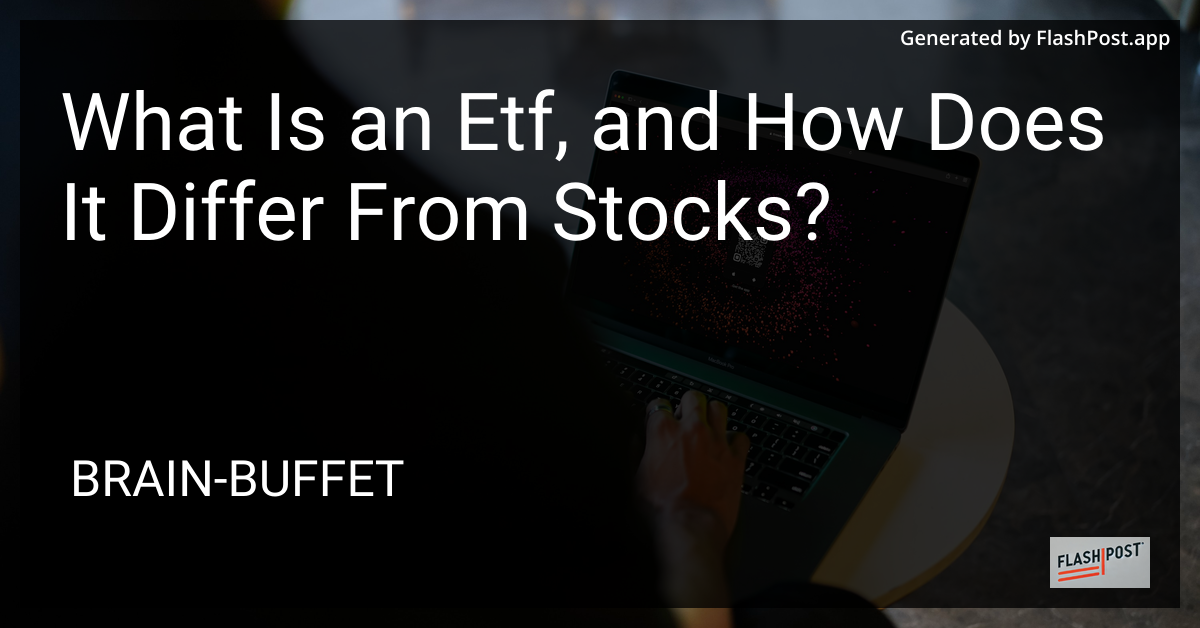What Is an Etf, and How Does It Differ From Stocks?

In the investment landscape, Exchange-Traded Funds (ETFs) and stocks are two of the most popular options for both novice and seasoned investors. While they share some similarities, understanding their differences is crucial for making informed financial decisions. This article will explore what an ETF is and how it differs from individual stocks, helping you better navigate the world of investing.
What is an ETF?
An ETF, or Exchange-Traded Fund, is a type of investment fund that holds a collection of assets, such as stocks, bonds, or other commodities. ETFs are traded on major stock exchanges, similar to how individual stocks are traded. They are designed to track the performance of a specific index, sector, commodity, or other assets. For example, there are ETFs that mirror the performance of the S&P 500 or those that focus on specific sectors like energy stocks or space exploration stocks.
Key Features of ETFs
- Diversification: By holding a collection of assets, ETFs offer broader market exposure, which helps reduce risk compared to investing in a single stock.
- Liquidity: ETFs can be bought and sold throughout the trading day, just like individual stocks, providing greater flexibility.
- Cost-Effectiveness: Most ETFs come with lower management fees than traditional mutual funds, making them a cost-effective way to diversify your portfolio.
How ETFs Differ from Stocks
Ownership and Structure
Stocks: When you invest in a stock, you are buying a share of ownership in a single company. Your investment's performance is tied directly to the fortunes of that individual company.
ETFs: Investing in an ETF gives you exposure to a broad range of assets. Rather than owning part of a single company, you own a portion of the entire collection of assets within the ETF.
Risk and Diversification
Stocks: Owning stocks means subjecting your investment to the risks associated with a single company's performance. If the company does poorly, your investment suffers.
ETFs: Due to their diversified nature, ETFs generally carry less risk. If one asset within the ETF performs poorly, it is often offset by better-performing assets in the fund.
Investment Goals
Stocks: Suitable for identifying growth stocks or focusing on a particular company or industry for potentially higher returns, albeit with higher risk.
ETFs: Ideal for investors seeking diversification and stable growth. They are especially popular among those who prefer a hands-off approach to investing and want to track broader market indices or sectors.
Conclusion
Both ETFs and stocks offer valuable opportunities for investors, but they are suited to different investment strategies and risk appetites. Understanding the key differences between them—ownership structure, diversification, and risk—can help you make informed decisions aligned with your financial goals. Whether you prefer the targeted approach of stock investing or the broad exposure offered by ETFs, both paths can lead to successful investment outcomes.
Understanding these differences can also guide your strategy in related areas of interest, such as energy stocks or space exploration stocks.
For those looking to delve deeper into specific sectors or stock types, consider exploring resources like strategies to identify growth stocks. Each investor's journey is unique, and choosing the right investment vehicle can set the foundation for financial success.